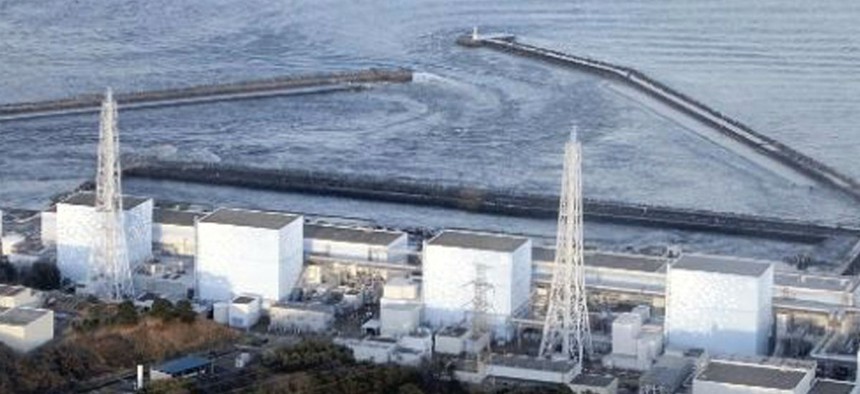
The Fukushima Daiichi nuclear disaster in Japan in 2011 helped contribute to a decrease in the agency's workload. Yasushi Kanno/YOMIURI SHIMBUN/dapd
Watchdog: Nuclear Regulatory Commission Should Take Longer View on Workforce Planning
GAO report dings agency for not looking ahead past two-year budget cycle.
The Nuclear Regulatory Commission must get better at long-term planning to ensure its employees and resources are deployed optimally to meet its goals, a new Government Accountability Office report said.
NRC issued its first strategic workforce plan last year and conducts workload forecasting to determine needs over the course of a two-year budget cycle. But that is not enough, analysts said. “Without workforce size and composition goals that extend beyond the two-year budget cycle, NRC is at risk of not having the right size and mix of skills needed to meet the demand for its services nor the time needed to develop or obtain employees with the skills needed to complete future workloads,” the GAO report said.
NRC has been riding a rollercoaster in staffing and funding over the past decade. The agency anticipated a significant uptick in work handling applications for new or expanding nuclear power plants following the 2005 Energy Policy Act, which included tax incentives favoring nuclear energy development. As a result, the agency saw its budget increase by 57 percent from fiscal 2005 to fiscal 2011, and its workforce grew by 28 percent over that time, from 3,100 full time employees in 2005 to nearly 4,000 in fiscal 2011.
But by 2011, the advent of cheap natural gas and renewed fears surrounding the safety of nuclear power—exacerbated by the Fukushima Daiichi nuclear disaster that year in Japan—meant the so-called “nuclear renaissance” had not arrived.
In 2014, NRC implemented Project Aim, an effort to develop clearer agency priorities and to properly align its budget and workforce with the then-lower workload, with a goal of meeting the agency’s service demand with a 10 percent reduction in budget by 2020, and with a workforce composition similar to its 2005 staffing level.
The GAO report lauded many aspects of Project Aim, including the development of staffing plans, reprioritizing various work activities and cross-training employees to make them more versatile within the agency.
But in addition to requiring longer term workforce and budget planning, analysts said the NRC needs to implement a comprehensive system for tracking employees’ skills. A pilot program has been developed, but is still at least a year from being implemented agencywide.
And GAO said the agency must more consistently train its managers and supervisors on strategic human capital management.
Without these measures, “NRC could reach a point at which it is reducing the number of staff when it needs to be increasing the numbers either in specific skill areas, as an agency, or both,” the GAO found.
In its response, the NRC largely accepted the findings, although it provided some technical clarifications, which were incorporated into the final report.
“Overall, the NRC agrees with the draft report and its findings,” wrote Victor McCree, NRC executive director for operations.
NEXT STORY: Treating the Invisible Wounds of War







